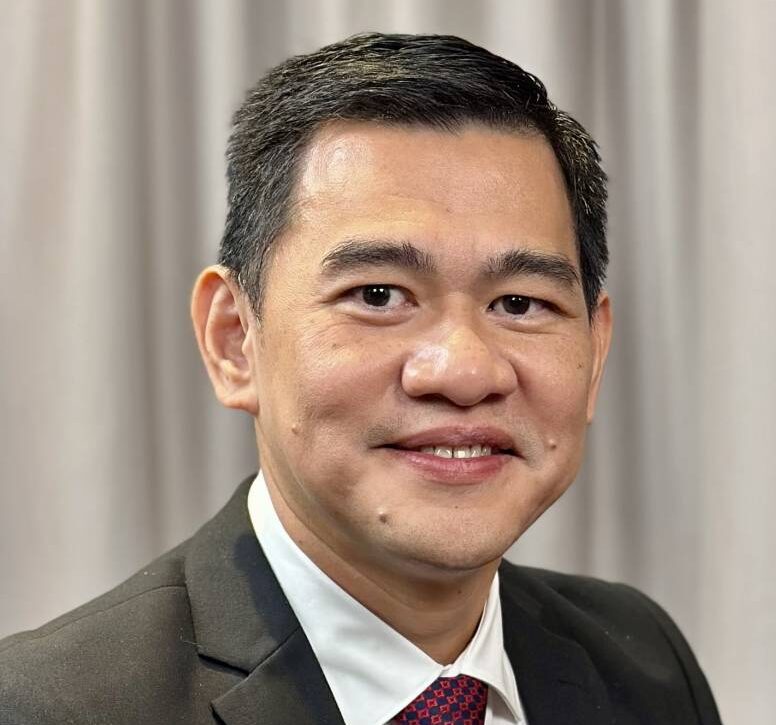Homegrown tech provider tracks building resilience

Usher is the only Filipino-made structural health monitoring (SHM) system, developed through a research and development collaboration project involving the Department of Science and Technology (DOST), Philippine Council for Industry, Energy and Emerging Technology Research and Development (PCIEERD), Department of Public Works and Highways (DPWH), and Mapua University.
In this interview, we asked Dr. Aldrine Uy, Usher president and CEO, and an enterprise innovation winner of the 4th Mansmith Innovation Awards, about technology innovation.
Question: Can you briefly tell us what SHM system is and why you claim your Usher system is the most advanced yet economical and cost-effective in the market?
Answer: The SHM system is designed to continuously assess the condition of structures, such as buildings or bridges, to detect any signs of deterioration or damage. It typically involves sensors and software to monitor various parameters, analyze data and provide insights into the structure’s health. Usher stands out as the most advanced SHM system due to several key advantages:
1. Advanced sensor technology: We utilize the latest micro-electro-mechanical systems (MEMS) as our core sensor component. MEMS sensors are known for their high sensitivity and accuracy, making them highly effective in monitoring vibrations in buildings with precision.
2. Comprehensive web portal: Our system includes a standard web portal package that facilitates remote collection, analysis and interpretation of data. This centralized platform ensures that users can access and evaluate data efficiently.
3. Mobile application: Usher is unique in offering a mobile application that allows structural engineers and property managers to receive real-time alerts and access data on the go. This is crucial for timely responses, especially since earthquakes or other critical events can occur unexpectedly.
4. Dependable local support: As a local company, we provide superior after-sales service tailored to our clients’ needs. Our support team is readily available to assist with any issues, ensuring reliable and responsive service.
In addition to these features, Usher is designed to be both economical and cost-effective. Our system provides advanced technology and comprehensive support at a competitive price, making it a valuable investment for ensuring the safety and longevity of structures.
Q: Can you share some details about the strategic partnerships with DOST, PCIEERD, DPWH and Mapua to create Usher? What are the key lessons learned?
A: The strategic partnerships with DOST, PCIEERD, DPWH and Mapua University were crucial in the development and success of Usher. Here are some key details and lessons learned:
1. Collaboration is key: Effective collaboration among diverse stakeholders was essential. Each partner brought unique strengths to the table—Mapua’s research and development capabilities, DPWH’s practical insights into infrastructure needs, DOST’s funding and support and PCIEERD’s role in overseeing and guiding the project.
2. Identifying critical needs: Recognizing and addressing the most critical needs was fundamental. By focusing on pressing issues in structural health monitoring, we ensured that the system would have strong relevance and impact. This clarity helped in securing committed champions for the project, like our dedicated team members.
3. Champions and advocates: Successful projects often need passionate champions. In our case, the support from Mapua and DPWH played a significant role in advocating for Usher. Their backing helped in driving the project forward and securing necessary resources.
4. Securing funding: Financial support from DOST PCIEERD was instrumental. Identifying and securing funding was critical to covering development costs and bringing the project to fruition. This financial backing allowed us to focus on creating a high-quality system without being hindered by budget constraints.
5. Ensuring utilization: For any system to be effective, it must be actively utilized by its intended users. The design and implementation of Usher were aligned with the needs and preferences of structural engineers and property managers, ensuring that the system would be widely adopted and effectively used.
These lessons underscore the importance of a well-coordinated approach, clear focus on needs, strong advocacy, secured funding and ensuring practical utility in the success of collaborative projects like Usher.
Q: As a newcomer in the market, what were the biggest obstacles you faced in gaining initial traction? How did you convince early adopters to try your product or service?
A: The biggest obstacle we faced was overcoming colonial mentality: Many people still prefer foreign brands and view locally made products as inferior. This bias was a significant challenge, especially when trying to qualify for government bids. Despite Usher being the only Filipino-made earthquake and structural health monitoring system in the world, and offering superior and more cost-effective solutions, we missed out on numerous opportunities due to stringent eligibility requirements that often favored established foreign brands.
Additionally, navigating through the pandemic was particularly tough for us. The economic downturn and restrictions put our company to the test. However, our “Usher now pay later” program proved to be a lifeline during this period. We offered building owners the chance to install Usher with a trial period of at least six months. This approach allowed them to experience the benefits of our system first-hand without immediate financial commitment. The positive results and satisfaction from the trial period led many to purchase Usher after the trial, helping us to sustain and grow our business through challenging times.
Q: What kind of feedback have you received from your first customers, and how have you used it to improve your offerings?
A: We received a lot of valuable feedback from our first customers due to our use of the popular design thinking process, which starts with empathizing with stakeholders. For example, feedback from Ayala Property Management Corp. highlighted a concern that interpreting data and deciding on actions might be challenging, particularly since security guards typically manage the buildings and structural engineers are usually consultants. They questioned the system’s utility in an earthquake scenario.
In response to this feedback, we developed the Usher light notifications system. We designed a clear, intuitive way to convey information:
• Green light: It indicates seismic activity but not significant enough to require evacuation.
• Yellow light: It signals that a safety-related evacuation is necessary.
• Red light: This alerts that an emergency evacuation is required because structural limits have been exceeded.
This approach ensures that even personnel without specialized training can understand the situation and take appropriate action quickly. This feedback-driven improvement has significantly enhanced the usability and effectiveness of our system.
Q: Can you walk us through a typical sales cycle for your product or service? How long does it usually take from initial contact to closing?
A: The typical sales cycle for our product involves several stages and the timeline can vary based on various factors. Generally, from the initial inquiry to closing the sale, the process can take up to a year. This duration includes the time a building owner spends reviewing options, conducting a bidding process and making a final decision, which usually takes between six to 12 months.
Once the decision is made, installation is relatively swift. For low-rise buildings, installation can be completed in just one day with a single unit. For high-rise buildings, the process takes about 20 days, as it requires the installation of three units.
Following installation, obtaining a certificate of installation from the local government unit (LGU) building official is the final step. This can take approximately three to six months, depending on the efficiency and workload of the LGU. In some cases, this timeline may be shorter depending on the responsiveness of the LGU. Once the certificate is issued, we consider the project complete.
Q: How do you plan to scale your market presence and reach a broader audience?
A: To scale our market presence and reach a broader audience, we are focusing on several key strategies. First, we are actively seeking investors to support our expansion efforts, enabling us to cover more areas within the Philippines. We have recently signed up a distributor for Baguio, which highlights the growing interest and commitment among communities to enhance infrastructure resilience and safety.
Additionally, we are exploring opportunities to find partners or distributors in other earthquake-prone countries, such as Indonesia. This international expansion aligns with our goal to extend Usher’s benefits to countries along the Pacific Ring of Fire.
In the Philippines, there are over a hundred thousand buildings that require systems like Usher, as mandated by the DPWH since 2015. However, the current compliance rate is estimated to be less than 5 percent. We have observed a significant increase in LGUs enforcing stricter regulations since last year, indicating a growing demand for our solution. By addressing these needs and expanding our reach, we aim to significantly improve infrastructure safety and resilience on a larger scale.
Josiah Go is chair and chief innovation strategist of Mansmith and Fielders Inc. He is also cofounder of the Mansmith Innovation Awards. To ask Mansmith Innovation team to help challenge assumptions in your industries, email info@mansmith.net.

















